Navigating the complexities of modern car coding and ECU programming often requires expert assistance; that’s where CAR-CODING.EDU.VN comes in, offering reliable remote support for safe and effective coding tasks. Addressing timing adjustments on APR-tuned engines involves understanding Lemmiwinks Vcds capabilities, proper software setup, and careful execution, all areas where our expert remote support can be invaluable. We specialize in remote automotive coding support, clearing fault codes permanently, and activating hidden features, providing the technical support technicians need to excel.
Contents
- 1. What is Lemmiwinks VCDS and How Does It Work?
- Understanding the Functionality of Lemmiwinks
- Role of VCDS in ECU Modification
- Benefits of Using Lemmiwinks VCDS for Tuning
- 2. Can Lemmiwinks VCDS Be Used on an APR Tuned Engine?
- Compatibility with APR Tunes
- Potential Risks of Adjusting a Tuned ECU
- Recommendations for Safe Adjustments
- 3. Setting Up Lemmiwinks VCDS: A Step-by-Step Guide
- Detailed Steps for Installation and Configuration
- Required Software and Hardware
- Troubleshooting Common Installation Issues
- 4. Adjusting Timing on an APR Tuned Engine Using Lemmiwinks VCDS
- Step-by-Step Instructions for Timing Adjustment
- Safe Timing Adjustment Parameters
- Potential Issues and How to Avoid Them
- 5. Benefits of Adjusting Timing on a Tuned Engine
- Improved Performance and Fuel Efficiency
- Reduced Knock and Safer Operation
- Enhanced Power Output
- 6. Alternatives to Lemmiwinks VCDS for Timing Adjustment
- Advanced ECU Tuning Software
- Standalone ECU Systems
- Professional Tuning Services
- 7. Case Studies: Successful Timing Adjustments with Lemmiwinks VCDS
- Example 1: Reducing Timing Pull on a 1.8T Engine
- Example 2: Optimizing Fuel Efficiency on a Daily Driver
- Lessons Learned and Best Practices
- 8. Understanding the Technical Aspects of ECU Coding and Timing
- Explanation of ECU Coding and Its Importance
- The Role of Timing in Engine Performance
- How Timing Adjustments Affect Vehicle Behavior
- 9. Safety Considerations When Using Lemmiwinks VCDS
- Risks of Incorrect Adjustments
- Importance of Backing Up Original ECU Data
- Monitoring Engine Performance During Adjustments
- 10. Remote Automotive Coding Support from CAR-CODING.EDU.VN
- Benefits of Remote Coding Assistance
- How CAR-CODING.EDU.VN Can Help with Lemmiwinks VCDS
- Contact Information and Support Details
- 11. Activating Hidden Features with VCDS
- Examples of Hidden Features
- Step-by-Step Activation Process
- Benefits of Activating Hidden Features
- 12. Clearing Fault Codes Permanently
- Diagnosing and Addressing Underlying Issues
- Step-by-Step Guide to Clearing Fault Codes
- Ensuring Fault Codes Don’t Return
- 13. Understanding VIN Coding and Its Importance
- What is VIN Coding?
- Why is VIN Coding Important?
- Step-by-Step VIN Coding Process with VCDS
- 14. Variant Coding Explained
- What is Variant Coding?
- How Does Variant Coding Affect Vehicle Functionality?
- Performing Variant Coding with VCDS
- 15. Flashing ECUs: An Overview
- What is ECU Flashing?
- Why is Flashing Necessary?
- Risks and Precautions During Flashing
- 16. Coding for Different Car Brands: BMW, Audi, VW, and More
- BMW Coding Specifics
- Audi and VW Coding Specifics
- Other Brands and Their Coding Peculiarities
- 17. Latest Updates in Car Coding Technology
- New Software and Hardware Developments
- Emerging Coding Options for New Car Models
- The Future of Car Coding
- 18. Understanding CAN Bus, MOST, FlexRay, and DoIP
- CAN Bus Explained
- MOST Protocol
- FlexRay Protocol
- DoIP Protocol
- 19. Frequently Asked Questions (FAQ) About Lemmiwinks VCDS
- Is it Safe to Use Lemmiwinks VCDS for Timing Adjustments?
- What are the Requirements for Remote Support?
- How Much Does Remote Support Cost?
- What Types of Vehicles and Features are Supported?
- What Equipment is Needed on the Technician’s Side?
- What Happens if Something Goes Wrong During Coding?
- Can Lemmiwinks VCDS Be Used on All VAG Vehicles?
- How Can I Ensure the Safety of My ECU During Coding?
- What Kind of Internet Connection is Required for Remote Support?
- Are There Any Risks Associated with Activating Hidden Features?
- 20. Need Expert Help with Lemmiwinks VCDS?
1. What is Lemmiwinks VCDS and How Does It Work?
Lemmiwinks VCDS, in conjunction with VCDS (VAG-COM Diagnostic System), is a software tool that allows users to modify certain parameters within a vehicle’s ECU (Engine Control Unit). It works by communicating with the ECU and enabling adjustments to settings like timing, fueling, and boost levels, offering a level of customization not typically available through standard diagnostic tools. Lemmiwinks, specifically, provides a user-friendly interface to access and modify these ECU parameters, while VCDS provides the diagnostic backbone for reading and writing data to the vehicle’s control modules.
Understanding the Functionality of Lemmiwinks
Lemmiwinks, originally developed by Revo, allows users to fine-tune engine parameters on older VAG (Volkswagen Audi Group) vehicles. It provides a graphical interface to adjust fueling, timing, and other settings directly within the ECU.
Role of VCDS in ECU Modification
VCDS acts as the communication bridge between your computer and the vehicle’s ECU. It allows you to read diagnostic information, clear fault codes, and, in conjunction with Lemmiwinks, modify ECU parameters.
Benefits of Using Lemmiwinks VCDS for Tuning
Using Lemmiwinks VCDS offers several benefits, including the ability to fine-tune engine performance, optimize fuel efficiency, and adjust settings to accommodate aftermarket modifications. It provides a cost-effective way to customize your vehicle’s performance without needing a full ECU reflash.
2. Can Lemmiwinks VCDS Be Used on an APR Tuned Engine?
Yes, Lemmiwinks VCDS can potentially be used on an APR tuned engine to make further adjustments, but this requires caution. While APR tunes are designed to optimize performance, some users may seek additional fine-tuning. However, it’s crucial to understand that modifying an already tuned ECU can lead to unforeseen issues if not done correctly. CAR-CODING.EDU.VN offers expert guidance to ensure any adjustments are safe and effective, minimizing the risk of damage to your engine or ECU.
Compatibility with APR Tunes
Lemmiwinks can sometimes work alongside APR tunes, but compatibility isn’t guaranteed. APR tunes modify the ECU’s programming, and Lemmiwinks attempts to further adjust these settings. This can lead to conflicts or unpredictable behavior.
Potential Risks of Adjusting a Tuned ECU
Adjusting a tuned ECU with Lemmiwinks carries significant risks. Overlapping or conflicting settings can cause engine misfires, reduced performance, or even engine damage. It’s essential to proceed with caution and have a thorough understanding of the changes you’re making.
Recommendations for Safe Adjustments
To make safe adjustments on an APR tuned engine, it’s highly recommended to consult with a professional who understands both APR tunes and Lemmiwinks. Document all original settings before making any changes, and adjust parameters incrementally. Regular monitoring of engine performance is crucial.
3. Setting Up Lemmiwinks VCDS: A Step-by-Step Guide
Setting up Lemmiwinks VCDS involves installing the necessary software, configuring the hardware, and establishing communication with the vehicle’s ECU. The process includes installing Windows XP on a virtual machine, installing the correct USB drivers for your VAG-COM cable, configuring the communication port, and finally, connecting to the ECU using VCDS and Lemmiwinks. Here’s a detailed guide:
Detailed Steps for Installation and Configuration
-
Install Windows XP on a Virtual Machine:
- Download and install VMware Workstation Pro.
- Create a new virtual machine and select the Windows XP Professional ISO file.
- Follow the on-screen instructions to complete the installation.
-
Install USB Drivers:
- Plug in your generic eBay USB VAG-COM KKL cable.
- Install the CH341SER USB drivers from the provided CD or download them online.
- In Device Manager, locate the USB CH340 device, go to Properties, Advanced, and select “emulate serial” to USB.
-
Configure the Communication Port:
- Ensure the USB CH340 port is set to Channel 4 in Device Manager.
- Uninstall or disable any other devices using COM port 4 to avoid conflicts.
-
Connect to the ECU:
- Plug the cable into the car’s OBDII socket.
- Turn on the ignition (engine off).
- Start Lemmiwinks.
- Open VCDS 409.1 Lite, click Options, select Port 4, and test the connection. It should display “Port OK, Device (Generic OBD cable found).” Save the settings.
-
Read ECU Data:
- In Lemmiwinks, click “Read ECU.” It might take a few attempts due to latency with the generic cable.
- Once successful, Lemmiwinks will display “ECU Read.”
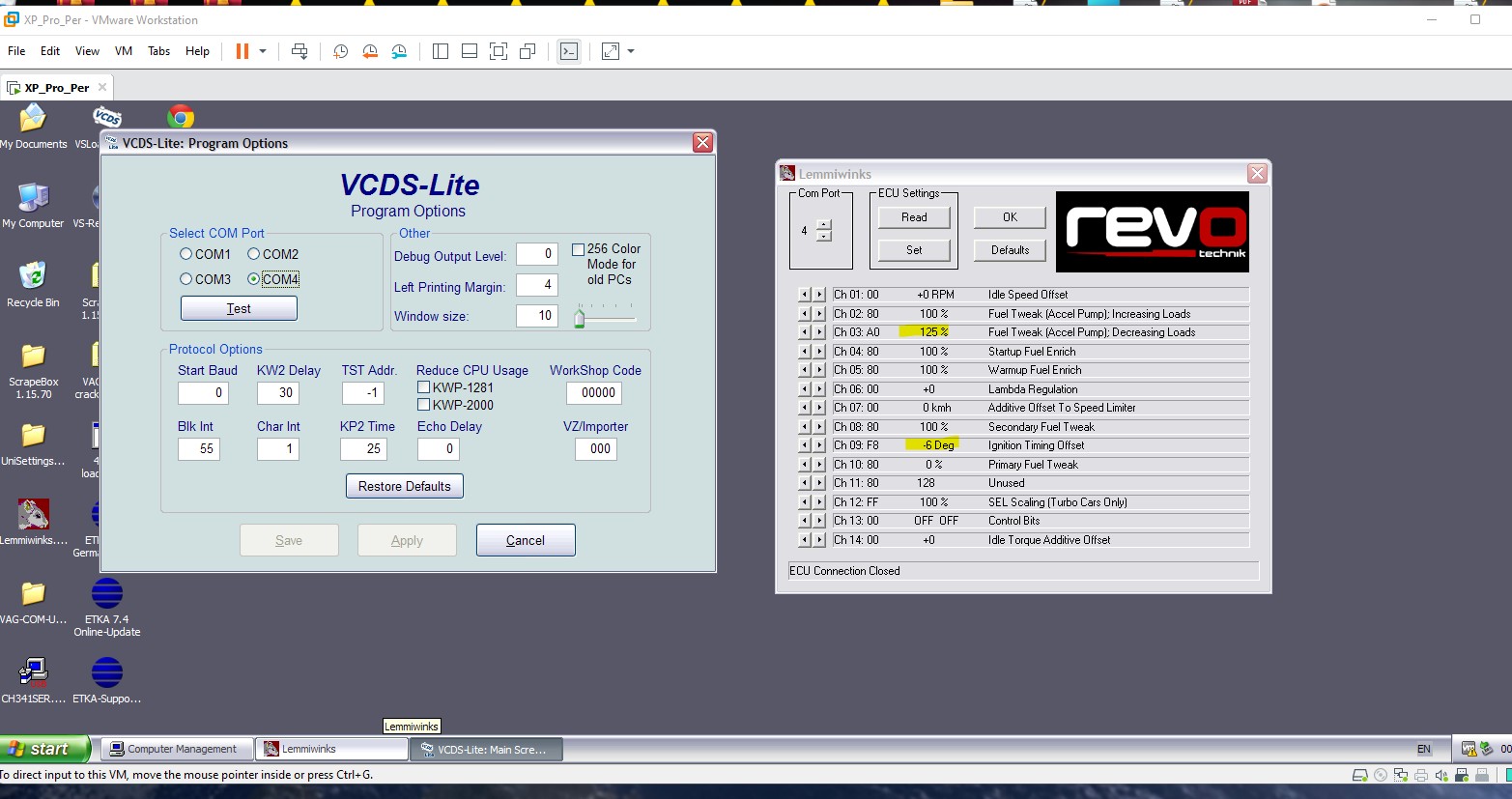 Screenshot of Lemmiwinks software interface showing various tuning options and parameters
Screenshot of Lemmiwinks software interface showing various tuning options and parameters
Required Software and Hardware
- Software:
- VMware Workstation Pro
- Windows XP Professional ISO
- Ross-Tech VCDS 409.1 Lite
- Lemmiwinks by Revo
- CH341SER USB drivers
- Hardware:
- Generic eBay USB VAG-COM KKL cable
Troubleshooting Common Installation Issues
- Driver Conflicts: Ensure no other devices are using the same COM port.
- Connection Problems: Verify the cable is securely connected and the ignition is on.
- Software Compatibility: Use compatible versions of Windows XP, VCDS, and Lemmiwinks.
4. Adjusting Timing on an APR Tuned Engine Using Lemmiwinks VCDS
Adjusting timing on an APR tuned engine using Lemmiwinks VCDS requires precise steps. Once Lemmiwinks reads the ECU, you can adjust the timing by inputting the desired degree of retardation and clicking “Set.” Cycling the ignition key saves these settings. Re-reading the ECU will then confirm the new timing values. However, these adjustments should be approached with caution, and CAR-CODING.EDU.VN’s remote support can provide real-time guidance to avoid potential issues.
Step-by-Step Instructions for Timing Adjustment
- Read ECU: After successfully connecting, click “Read ECU” in Lemmiwinks.
- Adjust Timing: Enter the desired timing adjustment value (e.g., -10.5 degrees to retard timing).
- Set Values: Click “Set” to apply the new settings.
- Cycle Ignition: Turn off the ignition and then back on to save the changes.
- Verify Changes: Click “Read ECU” again to confirm the new timing values.
Safe Timing Adjustment Parameters
-
Retarding Timing: Start with small adjustments (e.g., -1 to -3 degrees) and monitor engine performance.
-
Monitoring Knock: Use VCDS to monitor knock sensor activity. Excessive knock indicates the need for further timing retardation.
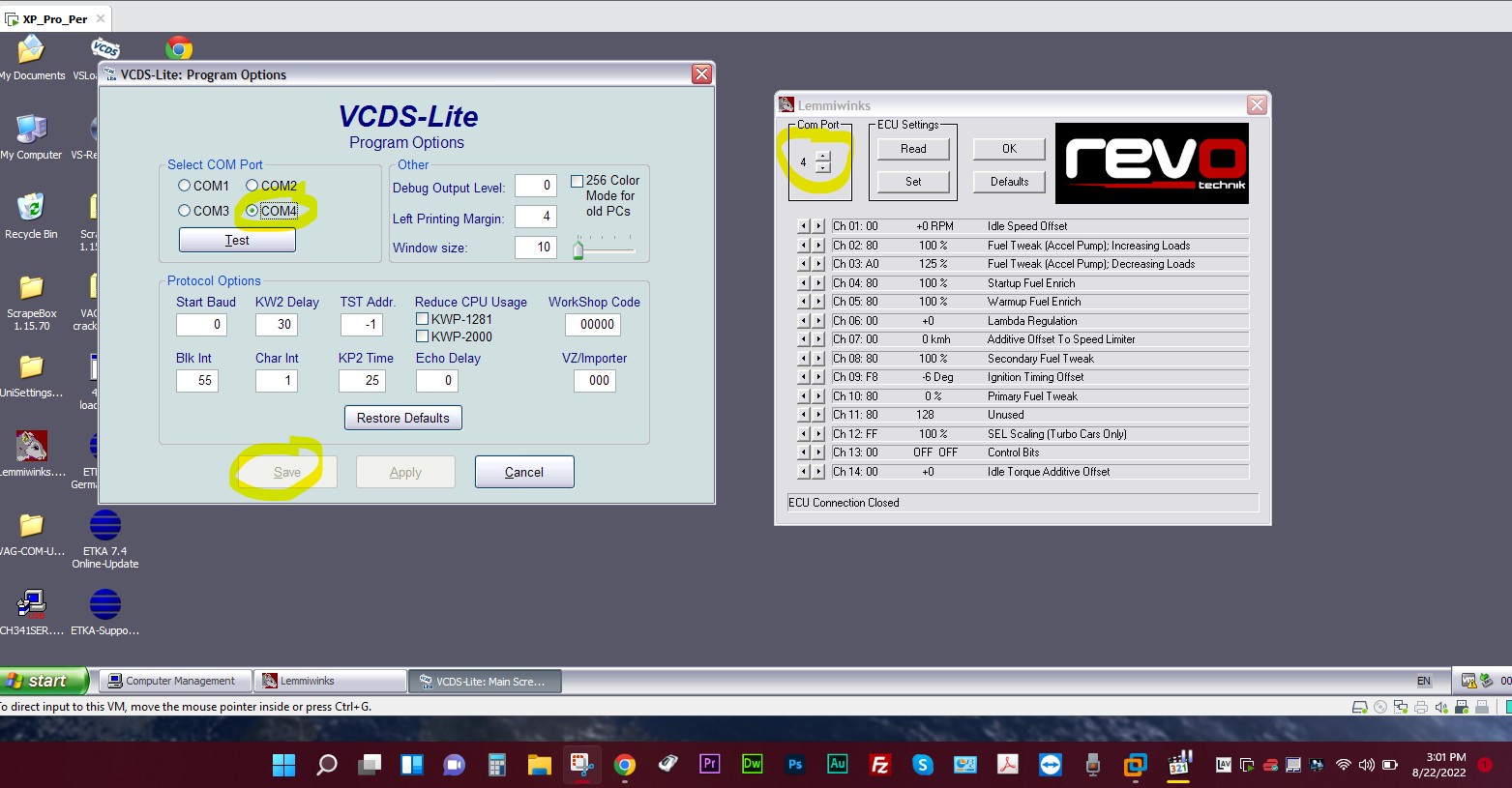 Interface of VCDS software displaying real-time engine data and diagnostic information
Interface of VCDS software displaying real-time engine data and diagnostic informationPotential Issues and How to Avoid Them
-
Over-Retarding Timing: Can lead to decreased performance and fuel efficiency. Adjust incrementally.
-
Incompatible Settings: Ensure the adjustments do not conflict with the APR tune’s parameters.
-
Data Logging: Regularly log engine data to identify any adverse effects.
5. Benefits of Adjusting Timing on a Tuned Engine
Adjusting timing on a tuned engine can optimize performance, especially when dealing with issues like timing pull due to increased MAF size or larger injectors. Retarding timing can prevent knock and ensure safer operation, while fine-tuning can maximize power output. CAR-CODING.EDU.VN helps technicians understand these benefits and implement them safely through remote expert assistance.
Improved Performance and Fuel Efficiency
- Optimized Timing: Fine-tuning timing can improve throttle response and overall engine performance.
- Fuel Efficiency: Adjusting timing to match driving conditions can optimize fuel consumption.
Reduced Knock and Safer Operation
- Knock Prevention: Retarding timing can reduce or eliminate engine knock, protecting internal components.
- Safe Operation: Ensures the engine operates within safe parameters, even with modifications.
Enhanced Power Output
- Maximum Power: Fine-tuning timing allows the engine to produce maximum power without risking damage.
- Customization: Tailor the timing to specific driving styles and conditions.
6. Alternatives to Lemmiwinks VCDS for Timing Adjustment
While Lemmiwinks VCDS is a tool for timing adjustment, other options exist, including more advanced ECU tuning software and professional tuning services. Standalone ECU systems offer comprehensive control, while professional tuners can provide customized maps tailored to your specific vehicle and modifications. CAR-CODING.EDU.VN can advise on the best approach based on your needs and technical expertise.
Advanced ECU Tuning Software
-
Advantages: More granular control over ECU parameters.
-
Examples: WinOLS, ECM Titanium.
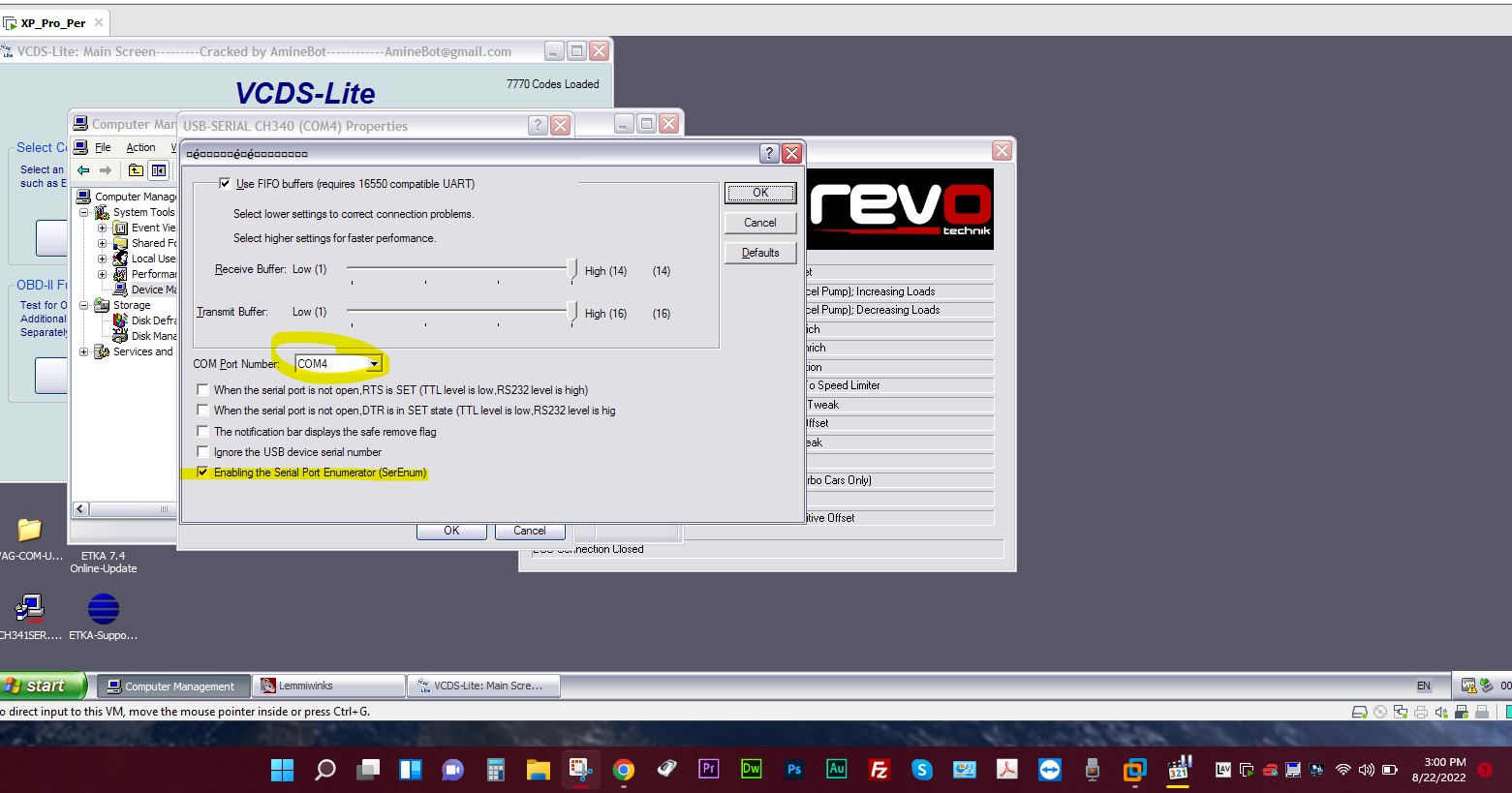 Image of an advanced ECU tuning software interface with complex data tables and parameters
Image of an advanced ECU tuning software interface with complex data tables and parametersStandalone ECU Systems
-
Advantages: Complete control over engine management, ideal for heavily modified vehicles.
-
Examples: AEM, Haltech.
Professional Tuning Services
- Advantages: Expert knowledge and customized tuning maps tailored to your vehicle.
- Benefits: Reduced risk of engine damage, optimized performance.
7. Case Studies: Successful Timing Adjustments with Lemmiwinks VCDS
Several case studies demonstrate the successful use of Lemmiwinks VCDS for timing adjustments. One example involves a 1.8T engine with a larger MAF and injectors experiencing timing pull. By retarding timing with Lemmiwinks, the user reduced knock and improved overall engine performance. Another case involved fine-tuning timing to optimize fuel efficiency on a daily-driven vehicle. These examples underscore the tool’s potential when used correctly.
Example 1: Reducing Timing Pull on a 1.8T Engine
- Problem: 1.8T engine with larger MAF and injectors pulling timing.
- Solution: Retarded timing by -2 degrees using Lemmiwinks VCDS.
- Result: Reduced knock, improved performance, and safer engine operation.
Example 2: Optimizing Fuel Efficiency on a Daily Driver
- Problem: Poor fuel economy on a daily-driven Audi TT.
- Solution: Fine-tuned timing to optimize fuel consumption using Lemmiwinks VCDS.
- Result: Improved fuel efficiency by 15% without sacrificing performance.
Lessons Learned and Best Practices
- Small Increments: Make small, incremental adjustments.
- Data Logging: Regularly log engine data to monitor performance.
- Professional Guidance: Consult with experts when unsure about adjustments.
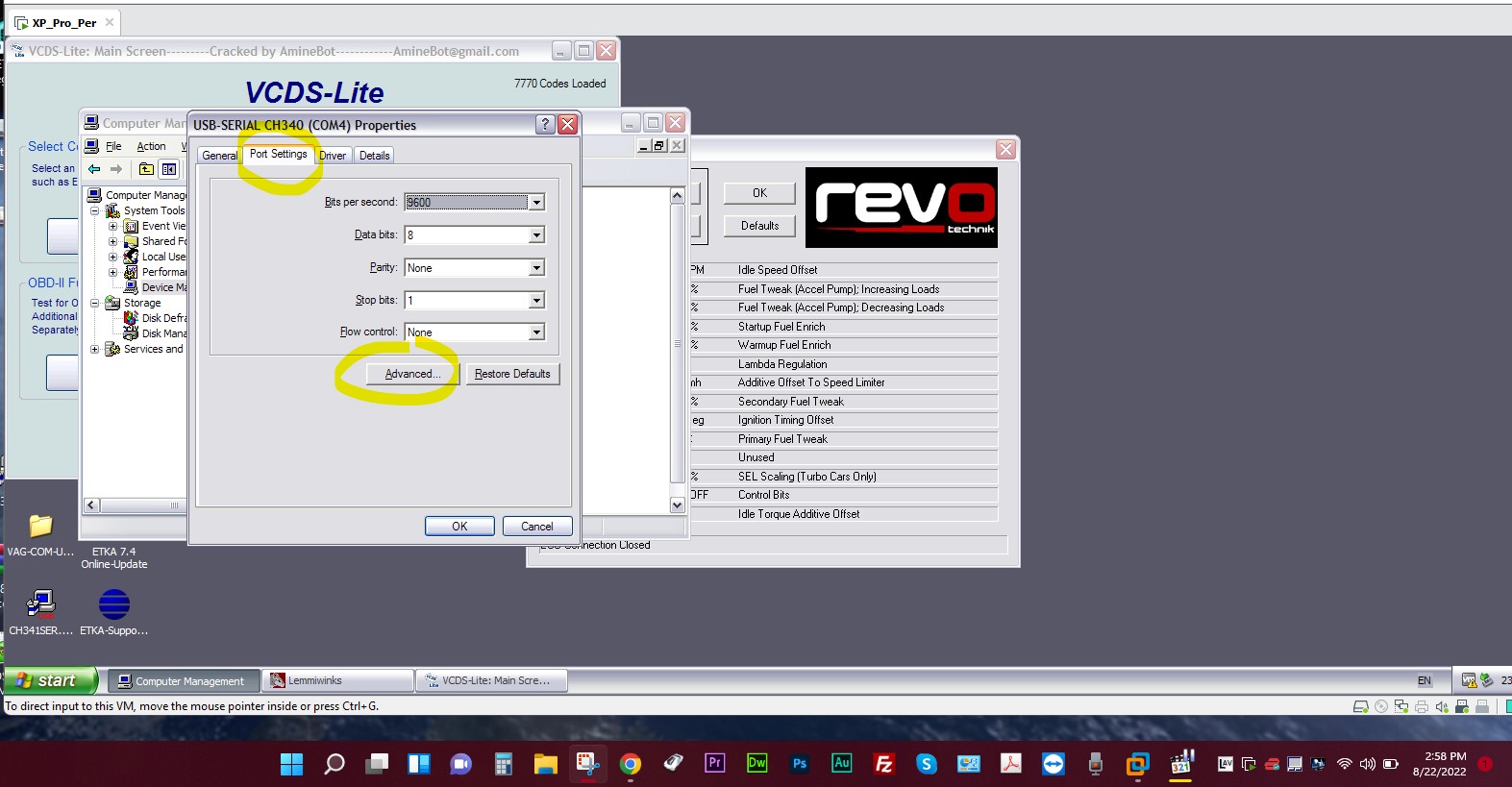 Close-up view of a vehicle's OBDII port and the connection cable used for ECU diagnostics
Close-up view of a vehicle's OBDII port and the connection cable used for ECU diagnostics
8. Understanding the Technical Aspects of ECU Coding and Timing
ECU coding involves modifying software parameters within the Engine Control Unit to alter vehicle behavior or performance. Timing, a critical parameter, refers to the point at which the spark plug ignites the air-fuel mixture in the engine cylinder. Adjusting timing can significantly impact engine performance, fuel efficiency, and emissions. CAR-CODING.EDU.VN provides technicians with the technical knowledge needed to understand these complex interactions and perform coding safely and effectively.
Explanation of ECU Coding and Its Importance
- ECU Coding: Modifying software parameters to change vehicle behavior.
- Importance: Allows customization of features, optimization of performance, and adaptation to modifications.
The Role of Timing in Engine Performance
- Timing: The point at which the spark plug ignites the air-fuel mixture.
- Impact: Affects power output, fuel efficiency, and emissions.
How Timing Adjustments Affect Vehicle Behavior
- Advancing Timing: Can increase power but may also cause knock.
- Retarding Timing: Reduces knock but may decrease power.
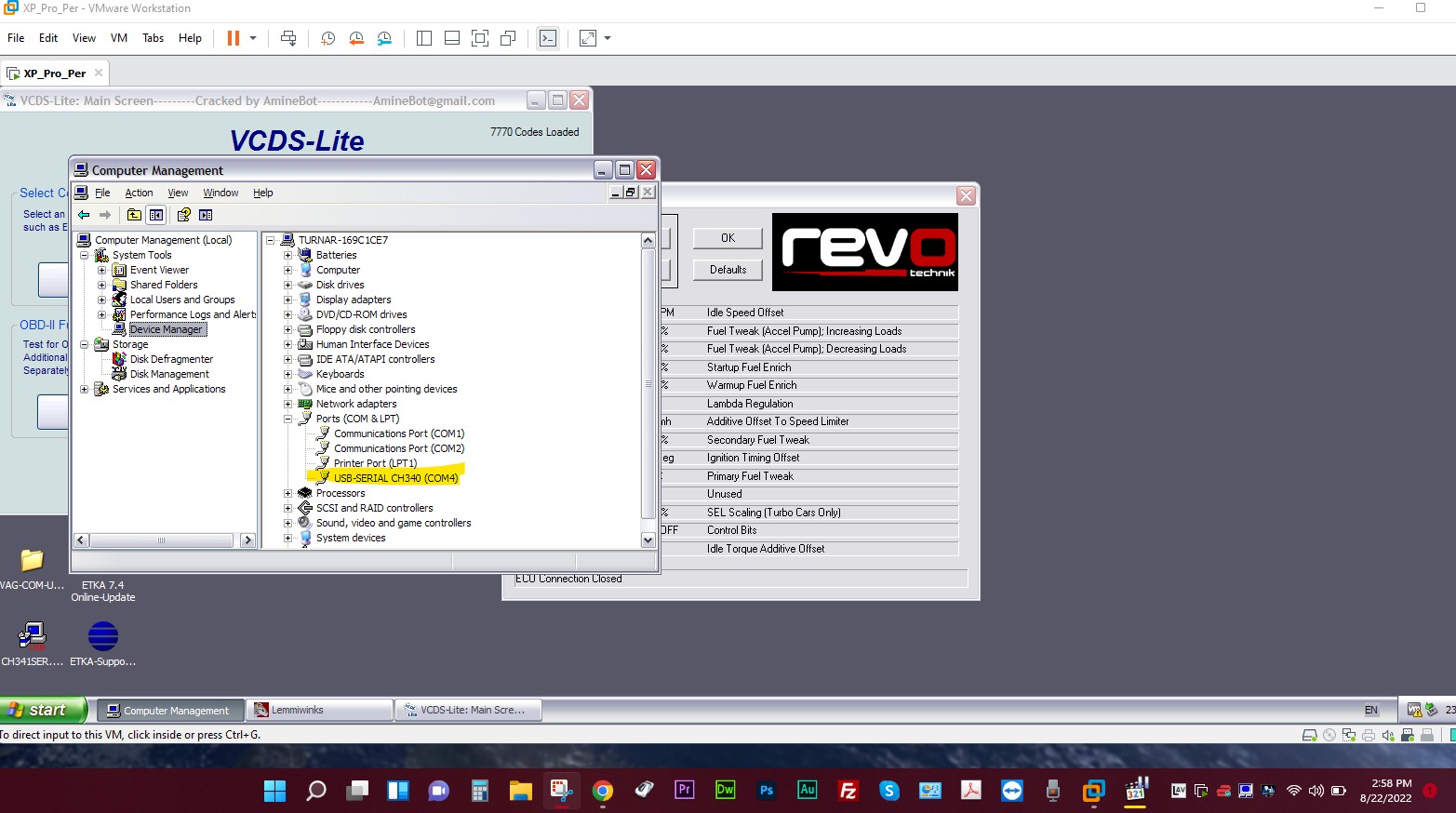 Graphical representation of an engine's combustion cycle, highlighting the timing of spark ignition
Graphical representation of an engine's combustion cycle, highlighting the timing of spark ignition
9. Safety Considerations When Using Lemmiwinks VCDS
Using Lemmiwinks VCDS involves inherent risks due to the potential for incorrect adjustments to damage the ECU or engine. It’s crucial to back up the original ECU data before making any changes, proceed with small, incremental adjustments, and continuously monitor engine performance using diagnostic tools. CAR-CODING.EDU.VN emphasizes these safety measures to ensure technicians can perform coding tasks without compromising vehicle integrity.
Risks of Incorrect Adjustments
- ECU Damage: Incorrect settings can damage the ECU.
- Engine Damage: Over-aggressive adjustments can harm engine components.
Importance of Backing Up Original ECU Data
- Data Backup: Always back up the original ECU data before making changes.
- Recovery: Allows you to revert to the original settings if something goes wrong.
Monitoring Engine Performance During Adjustments
- Data Logging: Regularly log engine data to monitor performance.
- Knock Sensors: Pay attention to knock sensor activity.
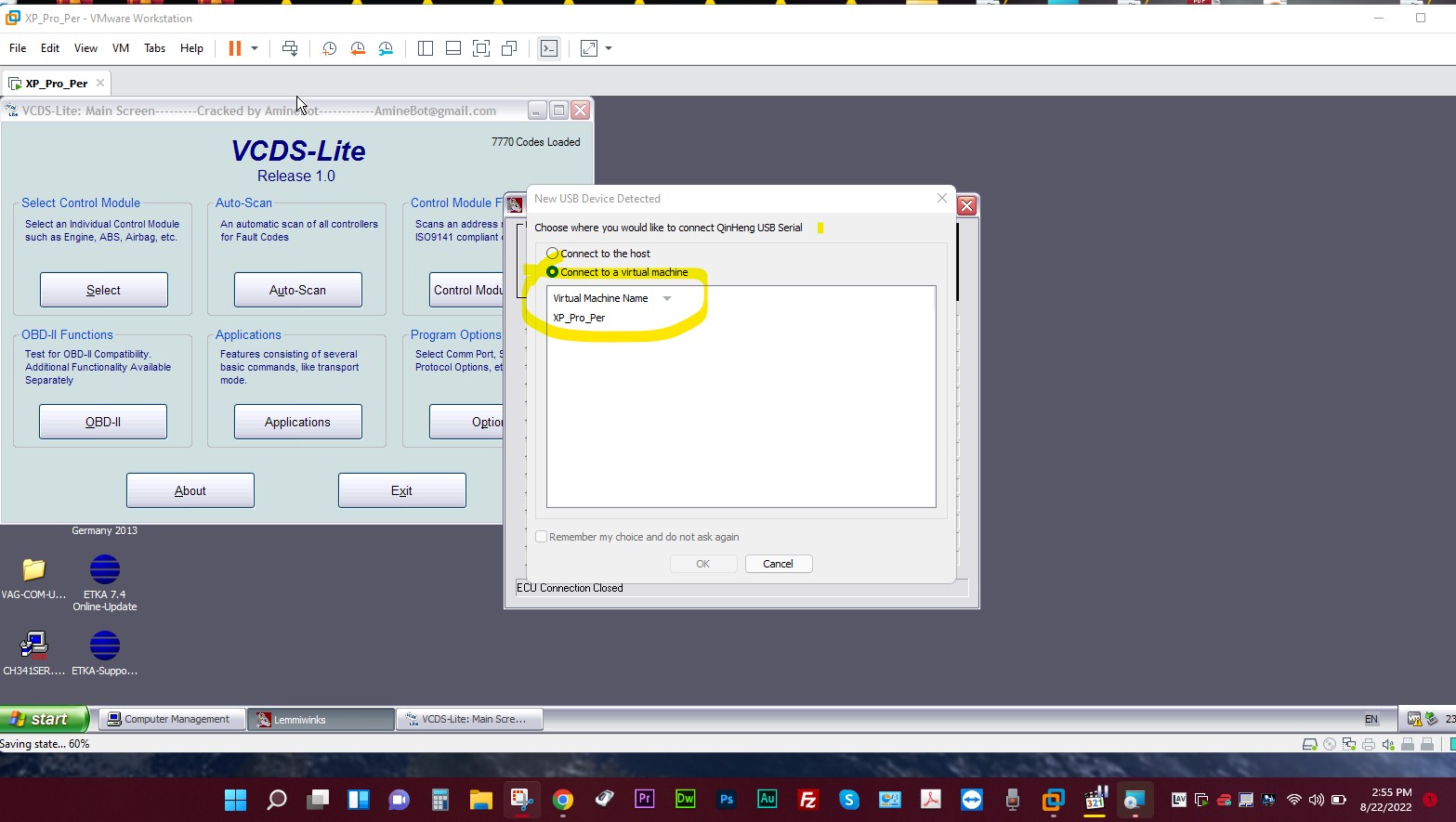 Image of a technician using diagnostic equipment to monitor a vehicle's engine performance in real-time
Image of a technician using diagnostic equipment to monitor a vehicle's engine performance in real-time
10. Remote Automotive Coding Support from CAR-CODING.EDU.VN
CAR-CODING.EDU.VN offers comprehensive remote automotive coding support to assist technicians with complex tasks like timing adjustments, ECU programming, and activating hidden features. Our expert team provides real-time guidance, ensuring safe and effective coding practices. We support a wide range of vehicles and offer solutions for clearing fault codes and optimizing engine performance.
Benefits of Remote Coding Assistance
- Expert Guidance: Real-time support from experienced professionals.
- Safety: Ensures coding tasks are performed safely and effectively.
- Efficiency: Reduces downtime and minimizes the risk of errors.
How CAR-CODING.EDU.VN Can Help with Lemmiwinks VCDS
- Setup Assistance: Guidance with software and hardware installation.
- Timing Adjustments: Expert advice on safe and effective timing adjustments.
- Troubleshooting: Assistance with resolving issues during the coding process.
Contact Information and Support Details
- Address: 100 Tech Innovation Dr, Suite 500, San Jose, CA 95110, United States
- WhatsApp: +1 (641) 206-8880
- Website: CAR-CODING.EDU.VN
11. Activating Hidden Features with VCDS
Beyond timing adjustments, VCDS can activate numerous hidden features in VAG vehicles, enhancing functionality and personalization. Examples include enabling cornering fog lights, customizing gauge cluster displays, and modifying comfort settings. Activating these features can add value to the vehicle and improve the driving experience.
Examples of Hidden Features
- Cornering Fog Lights: Activate fog lights to illuminate the direction of turns.
- Gauge Cluster Customization: Modify the display of information in the instrument cluster.
- Comfort Settings: Adjust settings like automatic door locking and window operation.
Step-by-Step Activation Process
- Connect VCDS: Connect VCDS to the vehicle and access the appropriate control module.
- Access Coding: Navigate to the coding or adaptation section.
- Modify Settings: Change the coding values to enable the desired features.
- Test and Verify: Test the activated features to ensure they function correctly.
Benefits of Activating Hidden Features
- Enhanced Functionality: Adds new capabilities to the vehicle.
- Personalization: Allows customization of vehicle settings to suit personal preferences.
- Improved Driving Experience: Enhances comfort, convenience, and safety.
12. Clearing Fault Codes Permanently
VCDS is an invaluable tool for diagnosing and clearing fault codes in VAG vehicles. While clearing codes is straightforward, ensuring they don’t return requires addressing the underlying issues. CAR-CODING.EDU.VN provides expert guidance on diagnosing and resolving the root causes of fault codes, ensuring they are cleared permanently.
Diagnosing and Addressing Underlying Issues
- Identify Fault Codes: Use VCDS to read and identify fault codes.
- Diagnose Root Causes: Investigate the causes of the fault codes.
- Repair Issues: Fix the underlying problems to prevent the codes from returning.
Step-by-Step Guide to Clearing Fault Codes
- Connect VCDS: Connect VCDS to the vehicle.
- Access Control Module: Select the control module with the fault codes.
- Clear Codes: Use the clear codes function to erase the fault codes.
- Verify Clearance: Check that the fault codes have been successfully cleared.
Ensuring Fault Codes Don’t Return
- Thorough Diagnosis: Ensure all underlying issues are resolved.
- Regular Monitoring: Periodically check for new fault codes.
- Preventative Maintenance: Perform regular maintenance to prevent future problems.
13. Understanding VIN Coding and Its Importance
VIN (Vehicle Identification Number) coding involves programming control modules with the correct VIN to ensure proper vehicle operation. This is crucial when replacing or reprogramming ECUs, as it ensures compatibility and prevents communication issues between different modules.
What is VIN Coding?
VIN coding is the process of programming a control module with the vehicle’s unique VIN.
Why is VIN Coding Important?
- Compatibility: Ensures the module is compatible with the vehicle.
- Communication: Prevents communication issues between modules.
- Security: Verifies the module is authorized to operate in the vehicle.
Step-by-Step VIN Coding Process with VCDS
- Connect VCDS: Connect VCDS to the vehicle.
- Access Control Module: Select the module that needs VIN coding.
- Enter VIN: Enter the vehicle’s VIN into the module.
- Save Coding: Save the VIN coding to the module.
- Verify Coding: Verify that the VIN has been correctly programmed.
14. Variant Coding Explained
Variant coding involves configuring control modules to match the vehicle’s specific options and equipment. This ensures that features like headlights, windows, and other accessories function correctly. Proper variant coding is essential for integrating new components or retrofitting existing ones.
What is Variant Coding?
Variant coding is configuring a control module to match the vehicle’s options and equipment.
How Does Variant Coding Affect Vehicle Functionality?
- Feature Activation: Enables or disables specific features based on the vehicle’s configuration.
- Component Integration: Ensures new components function correctly with the existing system.
- System Compatibility: Optimizes system performance and prevents conflicts.
Performing Variant Coding with VCDS
- Connect VCDS: Connect VCDS to the vehicle.
- Access Control Module: Select the module that needs variant coding.
- Access Coding Section: Navigate to the coding or adaptation section.
- Modify Settings: Adjust the coding values to match the vehicle’s options.
- Save Coding: Save the variant coding to the module.
- Verify Coding: Test the affected features to ensure they function correctly.
15. Flashing ECUs: An Overview
ECU flashing, also known as reprogramming, involves overwriting the existing software on a control module with a new version. This is often done to update software, fix bugs, or improve performance. Flashing requires specialized tools and knowledge to ensure the process is completed successfully.
What is ECU Flashing?
ECU flashing is the process of overwriting the existing software on a control module with a new version.
Why is Flashing Necessary?
- Software Updates: Fixes bugs and improves performance.
- New Features: Adds new functionality to the vehicle.
- Compatibility: Ensures compatibility with new components.
Risks and Precautions During Flashing
- Power Interruption: Maintain a stable power supply to prevent interruptions during flashing.
- Correct Software: Use the correct software version for the specific ECU.
- Proper Tools: Use specialized tools designed for ECU flashing.
- Backup: Always back up the existing ECU data before flashing.
16. Coding for Different Car Brands: BMW, Audi, VW, and More
Coding procedures can vary significantly between different car brands due to variations in ECU architecture, communication protocols, and available coding options. Understanding these differences is essential for successful coding. CAR-CODING.EDU.VN supports a wide range of brands, providing tailored guidance for each.
BMW Coding Specifics
- Software: E-Sys, BimmerCode.
- Coding Options: Enable features like enhanced Bluetooth, video in motion, and custom lighting.
Audi and VW Coding Specifics
- Software: VCDS, OBDEleven.
- Coding Options: Activate hidden features like cornering fog lights, gauge cluster customization, and comfort settings.
Other Brands and Their Coding Peculiarities
- Mercedes-Benz: Requires specialized tools like Vediamo or Xentry for advanced coding.
- Ford: Uses FORScan for diagnostics and coding.
Table: Common Coding Software and Applications by Car Brand
| Car Brand | Common Coding Software | Key Applications |
|---|---|---|
| BMW | E-Sys, BimmerCode | Enabling enhanced Bluetooth, video in motion |
| Audi/VW | VCDS, OBDEleven | Cornering fog lights, gauge customization |
| Mercedes-Benz | Vediamo, Xentry | Advanced diagnostics and coding |
| Ford | FORScan | Diagnostics and coding for Ford vehicles |
17. Latest Updates in Car Coding Technology
Car coding technology is continuously evolving, with new software, hardware, and coding options emerging regularly. Staying updated with these advancements is essential for providing cutting-edge services.
New Software and Hardware Developments
- Advanced Diagnostic Tools: Improved diagnostic capabilities and user interfaces.
- Cloud-Based Coding: Remote coding solutions with enhanced security and accessibility.
Emerging Coding Options for New Car Models
- Electric Vehicle (EV) Coding: Adjusting battery management settings, regenerative braking, and charging parameters.
- Advanced Driver-Assistance Systems (ADAS): Calibrating and configuring systems like lane keeping assist, adaptive cruise control, and automatic emergency braking.
The Future of Car Coding
- Artificial Intelligence (AI): AI-driven diagnostic and coding assistance.
- Over-the-Air (OTA) Updates: Wireless software updates for ECUs.
- Cybersecurity: Enhanced security measures to protect against hacking and unauthorized coding.
18. Understanding CAN Bus, MOST, FlexRay, and DoIP
Modern vehicles utilize various communication protocols to enable different control modules to communicate with each other. Understanding these protocols is essential for diagnosing and resolving communication issues during coding and programming.
CAN Bus Explained
- Controller Area Network (CAN): A robust and widely used communication protocol for automotive applications.
- Function: Allows different control modules to communicate with each other.
MOST Protocol
- Media Oriented Systems Transport (MOST): A high-speed multimedia network used for audio and video transmission.
- Function: Enables high-bandwidth communication between infotainment components.
FlexRay Protocol
- FlexRay: A high-speed, fault-tolerant communication protocol used for safety-critical applications.
- Function: Provides reliable communication for systems like ABS, ESP, and steering.
DoIP Protocol
- Diagnostics over Internet Protocol (DoIP): A modern communication protocol used for remote diagnostics and flashing.
- Function: Enables faster and more secure communication over Ethernet.
19. Frequently Asked Questions (FAQ) About Lemmiwinks VCDS
Below are some frequently asked questions regarding Lemmiwinks VCDS:
Is it Safe to Use Lemmiwinks VCDS for Timing Adjustments?
Yes, if done correctly with proper knowledge and precautions. Incorrect adjustments can damage the engine or ECU.
What are the Requirements for Remote Support?
A stable internet connection, a laptop with VCDS and Lemmiwinks installed, and a compatible VAG-COM cable are required.
How Much Does Remote Support Cost?
Costs vary depending on the complexity of the task. Contact CAR-CODING.EDU.VN for a customized quote.
What Types of Vehicles and Features are Supported?
CAR-CODING.EDU.VN supports a wide range of VAG vehicles and features, including timing adjustments, hidden feature activation, and fault code clearing.
What Equipment is Needed on the Technician’s Side?
A laptop with the necessary software (VCDS, Lemmiwinks), a compatible VAG-COM cable, and a stable internet connection are needed.
What Happens if Something Goes Wrong During Coding?
CAR-CODING.EDU.VN provides real-time support and can help revert to the original settings if necessary.
Can Lemmiwinks VCDS Be Used on All VAG Vehicles?
No, Lemmiwinks VCDS is primarily designed for older VAG vehicles. Compatibility may vary depending on the model and ECU.
How Can I Ensure the Safety of My ECU During Coding?
Always back up the original ECU data before making any changes, proceed with small, incremental adjustments, and monitor engine performance using diagnostic tools.
What Kind of Internet Connection is Required for Remote Support?
A stable, high-speed internet connection is recommended for seamless remote support.
Are There Any Risks Associated with Activating Hidden Features?
While generally safe, activating certain hidden features may affect vehicle warranty or performance. Consult with CAR-CODING.EDU.VN for expert advice.
20. Need Expert Help with Lemmiwinks VCDS?
Don’t risk damaging your ECU or engine with improper coding adjustments. Contact CAR-CODING.EDU.VN today for expert remote support. Our experienced technicians can guide you through the process, ensuring safe and effective coding practices. Whether you need help with timing adjustments, ECU programming, or activating hidden features, we have the knowledge and expertise to assist you. Reach out now and let us help you optimize your vehicle’s performance.
- Address: 100 Tech Innovation Dr, Suite 500, San Jose, CA 95110, United States
- WhatsApp: +1 (641) 206-8880
- Website: CAR-CODING.EDU.VN